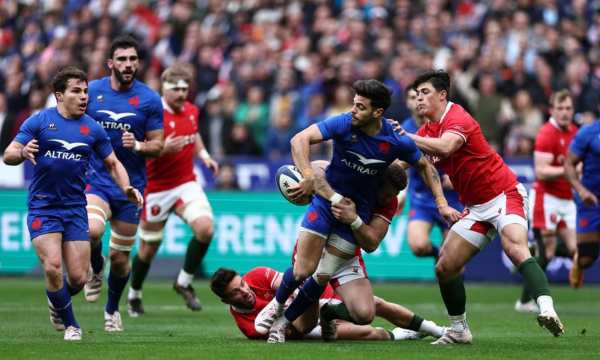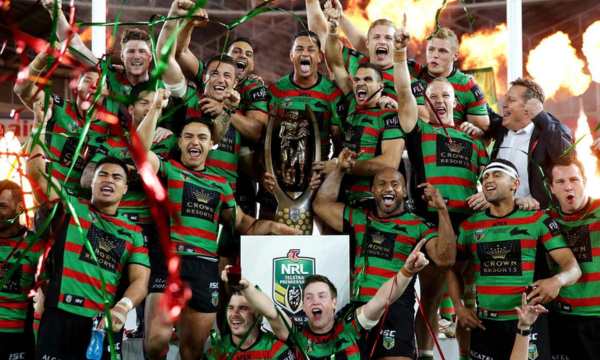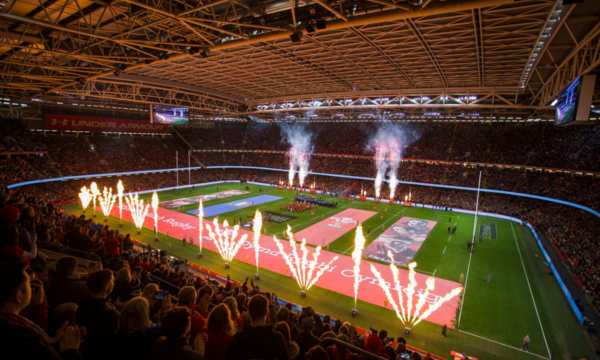Rugby League: Discover More About the Most Intense Sport on the Field
Rugby League: the sport that combines speed, strength, and strategy in an electrifying experience!
Anúncios
Different from Rugby Union, Rugby League has rules that favor speed and constant ball movement.
Have you ever wondered why so many people are enchanted by this specific format of rugby?
The answer lies in the intensity of the contests, the clarity of the rules, and the continuous excitement the game provides.
If you want to understand more about this fascinating universe, keep reading to discover all the secrets of this rugby modality.
What is Rugby League? The Origin of the Most Dynamic Sport
Rugby League officially began in 1895 when 22 clubs from northern England decided to separate from the Rugby Football Union.
While Rugby Union remained amateur for almost a century after the split, Rugby League quickly professionalized, attracting the working class of northern England.
Rule changes were implemented to create a more dynamic and accessible spectacle for spectators.
Currently, this sport is especially popular in Australia, England, and New Zealand, with significant growth in Pacific countries like Fiji, Papua New Guinea, and Samoa.
The constant evolution of the rules keeps the sport more exciting and watched in these regions.
Rules and Positions Every Fan Needs to Know
In Rugby League, each team has 13 starting players and 4 reserves who can come in and out as per the coach’s strategy.
The main objective is to score more points than the opponent during the 80 minutes of the game, divided into two equal halves.
Points in this modality are scored through tries (4 points), conversions after a try (2 points), penalties (2 points), and field goals (1 point).
The fundamental rule of Rugby League is the limit of six tackles before the obligation to hand over possession to the opponent.
After each tackle, the tackled player must quickly get up and pass the ball backward with their feet, in the so-called “play-the-ball”.
Unlike Rugby Union, there are no rucks or mauls, making the game more fluid and continuous.
- Fullback (1): Last defender and important attacker who joins the line.
- Wingers (2 and 5): Sprinters responsible for finishing and the first meters in defense exit.
- Centers (3 and 4): Combine defensive strength and attacking power on the sides.
- Five-eighth (6): Playmaker with sharp tactical vision.
- Halfback (7): Main distributor and strategist of the team.
- Props (8 and 10): Advance with brute force to gain meters.
- Hooker (9): Central distributor and tackle specialist.
- Second-rowers (11 and 12): Versatile in attack and defense on the sides of the field.
- Lock (13): Combines the strength of forwards with the skill of backs.
Six Tackles System: The Key to Game Speed
The six tackles system is the beating heart that differentiates Rugby League from any other contact sport.
This concept, introduced in the 1960s, completely revolutionized the game’s pace. Each team has exactly six tackles to advance on the field and try to score points.
After the sixth tackle, possession must change to the opposing team.
This limitation creates a fascinating tactical urgency, where each tackle needs to be maximized in terms of territorial gain.
Teams often kick on the fifth or sixth tackle when they can’t get close to the try line, trying to force defensive errors or ensure better field position.
The mental clock counting the tackles is a fundamental part of the strategy of this sport.
Strategic options within the six tackles cycle:
- First tackles: Gain meters with direct runs from the strongest players.
- Intermediate tackles: Create moments and test different points of the defense.
- Fifth tackle: Decision moment between continuing the attack or kicking tactically.
- Sixth tackle: Last chance to score before the mandatory possession change.
The beauty of this system lies in how it perfectly balances attack and defense, creating constant tension and forcing quick and creative decisions.

Tackle-System-(Source-Google)
From NRL to the Rugby World Cup: Get to Know the Most Prestigious Tournaments
The National Rugby League (NRL) in Australia represents the pinnacle of professional Rugby League globally, combining century-old tradition with modern structure and high technical level.
Sixteen clubs annually compete in a regular season followed by electrifying finals, culminating in the spectacular Grand Final.
The State of Origin, contested between Queensland and New South Wales, is considered the peak of rugby intensity, with massive television audiences.
In the northern hemisphere, the European Super League represents the elite of professional Rugby League, with clubs mainly from England, but also from France and occasionally from Canada.
The competition adopts a system similar to the NRL, with a Grand Final that attracts tens of thousands of spectators.
The Magic Weekend is a unique event where all teams play in the same stadium over a weekend.
Other world competitions:
- Championship and League 1: Lower divisions of the English system.
- Rugby League World Cup: Held every four years since 1954.
- Pacific Tests: Matches between Pacific nations like Tonga, Samoa, and Fiji.
- NRL Women’s Premiership: The main growing women’s competition.
The Rugby League World Cup brings together the top teams every four years, with Australia historically dominating but increasing competitiveness from nations like England, New Zealand, and Tonga.
Unforgettable Moments in World Rugby League
The history of this rugby modality is filled with moments that transcend the sport and become eternal in the memory of fans.
The 1989 NRL final between Balmain Tigers and Canberra Raiders is often cited as the greatest match ever played.
With dramatic overtime and a historic comeback led by Steve Roach, this game defined what sports drama means.
The international emergence of Tonga as a power in this sport at the 2017 World Cup revolutionized the global landscape.
Their victory over New Zealand and the epic semifinal against England showed that the balance of power in the sport was changing drastically.
- Mark Coyne’s “miracle” try (1994): A 13-pass play in the last minute of State of Origin.
- Fiji’s victory over England (2013): Biggest upset in the World Cup.
- St Helens dynasty (2019-2023): Four consecutive Super League titles.
- Rabbitohs’ redemption (2014): Return to the top after 43 years and league exclusion.
- Greg Inglis’ impossible try (2008): Supernatural display of balance and skill.
The nature of the game, with its emphasis on speed and decisive points, naturally creates scenarios where legacies are built in seconds.

Rabbitohs-return-in-2014-(Source-Google)
The Best Players: From Legends to Rising Stars
The pantheon of Rugby League legends is inhabited by extraordinary athletes who redefined the sport’s possibilities.
Wally Lewis, simply known as “The King”, revolutionized the five-eighth position in the 80s and 90s. His game vision and leadership in Queensland during State of Origin created an unmatched legacy in Australian sports.
Internationally, Ellery Hanley represented the perfect combination of physical power and technical skill, dominating both English and Australian rugby.
Cameron Smith is widely considered the most complete player of the modern era, with tactical intelligence, durability, and leadership that set new standards of excellence for the hooker position.
Players who revolutionized the sport:
- Andrew Johns: The “Immortal” with precise kicks and impeccable offensive organization.
- Darren Lockyer: Masterfully transformed from fullback to five-eighth.
- Mal Meninga: Impressive physical power combined with refined technique.
- Sam Burgess: Modern embodiment of bravery and determination on the field.
- Jonathan Thurston: Perfect combination of natural talent and hard work.
- James Tedesco: Example of the athletic evolution of the modern player.
The new generation brings talents like Nathan Cleary, Tom Trbojevic, and Kalyn Ponga, who are redefining the limits of possibility in contemporary rugby.
The Importance of Speed and Agility in Rugby League
Speed is the determining factor that separates Rugby League from other contact sports, creating a unique spectacle for spectators.
The six tackles system and the “play-the-ball” rule eliminate stoppages, keeping the game in constant motion.
Statistics show that players in this sport run an average of 7-9 km per match, alternating between powerful sprints and quick recoveries.
Mental agility is as crucial as physical agility. With only seconds to make decisions under intense physical pressure, players develop an extraordinary ability to process information quickly.
Hookers and halfbacks often need to assess complete defensive formations and execute the ideal play in fractions of a second.
Physical conditioning in this sport has dramatically evolved in the professional era, with modern players reaching levels of aerobic and anaerobic power.
Physical preparation emphasizes not only endurance but the ability to perform powerful movements repeatedly for 80 minutes.
The result is a sport where moments of technical brilliance happen under extreme physical fatigue, testing the limits of human potential.
Curiosities and Unusual Facts of This Dynamic Sport
Rugby League has surprising traditions and statistics that many fans are unaware of.
The ball in this modality is slightly smaller than Rugby Union, specifically designed to facilitate faster and more precise passes.
Originally, the sport was known as “Northern Union” for almost 30 years before officially adopting the current name in 1922.
The highest score ever recorded in an international match was in 2000, when New Zealand defeated Papua New Guinea by an impressive 70-0.
Interestingly, this sport was played at the 1908 London Olympics, with Australia winning the gold medal by defeating Great Britain in the final.
Other surprising facts:
- The NRL final is consistently the most-watched television event in Australia.
- Papua New Guinea is the only country where this sport is considered the national sport.
- The attendance record was 107,999 spectators at the 1999 World Cup final.
- The first game broadcast live on television occurred in 1951.
- The sport’s rules directly influenced the development of American football.
This sport has a strong tradition in mining and working-class communities in northern England, where it emerged as an alternative to Rugby Union, considered elitist at the time.
The sport’s culture values durability, with players like Cameron Smith competing in more than 400 professional matches during their careers.
Why is Rugby League Considered the Most Intense Sport?
The unparalleled intensity of this sport results from the perfect combination of brutal physical contact and continuous game speed.
The physical impact is comparable to American football but without frequent pauses between plays.
Mental pressure is equally extreme, with crucial tactical decisions made under physical exhaustion.
The six tackles system creates an “economy of opportunities” where each error has immediate and significant consequences.
Players often need to execute precise technical skills while absorbing physical impacts from other players.
Testimonials from athletes who migrated between different contact sports frequently highlight Rugby League as the most physically demanding.
The endurance required to maintain high energy levels repeatedly for 80 minutes, combined with constant impacts, creates an athletic test unparalleled in the sports world.
The ability to maintain mental clarity to execute complex strategies while the body reaches extreme fatigue limits is what truly defines great players.
Conclusion
Rugby League represents the perfect fusion of extraordinary athleticism, sophisticated strategy, and passionate tradition.
The unique six tackles system, constant fluidity, and unmatched physical intensity create a sports experience that few can rival in excitement or spectacle.
For beginners, it offers clear rules and continuous actions that facilitate immediate understanding and appreciation.
For experienced fans, the tactical nuances and individual moments provide infinite layers of analysis and admiration.
Regardless of where one is, Rugby League continues to enchant new audiences and strengthen its position as one of the most electrifying sports on the planet.
FAQ
Why is Rugby League not as popular as Rugby Union internationally?
What are the mandatory equipment to play Rugby League?
How does the promotion and relegation system work in English leagues?
Are there significant differences between women’s and men’s Rugby League?
What does it mean when the commentator mentions “dummy half”?
 7 Bigger Rugby Fields Every Fan Should Know
7 Bigger Rugby Fields Every Fan Should Know
Pure adrenaline, tradition and unforgettable victories: that’s what great rugby fields are all about. Anúncios Have you ever stopped to think about the rugby fields that […]
Keep reading World Rugby Sevens: Get to Know Everything About the Olympic Tournament
World Rugby Sevens: Get to Know Everything About the Olympic Tournament
Discover the electrifying energy of World Rugby Sevens and get ready to fall in love with this dynamic sport. Anúncios This championship combines speed, skill and […]
Keep reading How to Watch Live Rugby on DAZN: Your Complete Guide
How to Watch Live Rugby on DAZN: Your Complete Guide
Ready to feel the excitement of live rugby without leaving your couch? Experience the adrenaline with the Dazn App! Anúncios If you’re someone who cheers for […]
Keep reading